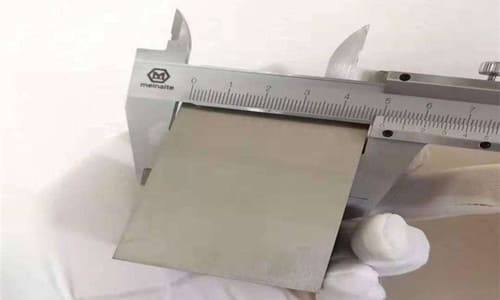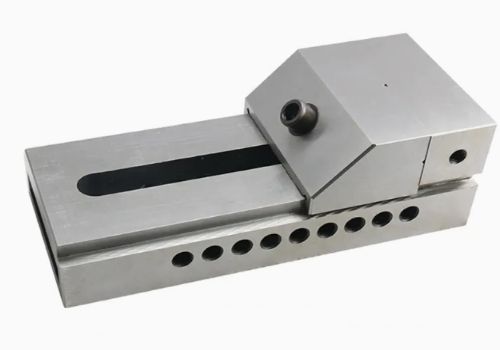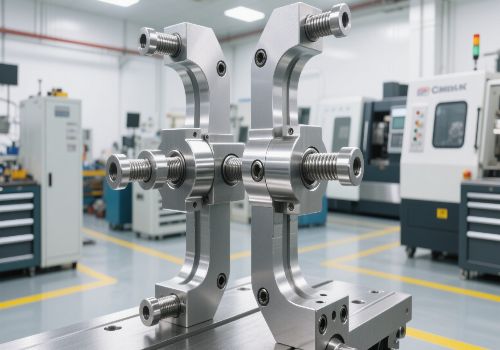In mechanical manufacturing, The most common is the tolerance and fit of mechanical parts, so what is machining industry tolerance fit? What should be paid attention to in tolerance fit?
1. Overview of interchangeability of tolerance fit
The interchangeability in mechanical manufacturing industry usually includes the interchange of geometric parameters (such as size) and mechanical properties (such as hardness and strength). Only the interchange of geometric parameters is discussed here.
The amount of variation allowed in the dimensions and geometric parameters of mechanical parts is called “tolerance”. The interchangeability of mechanical parts in geometric parameters is reflected as tolerance standard. The tolerance standard is also the basic standard in the mechanical manufacturing industry. It provides a theoretical basis for the standardization, serialization and generalization of the machine, thereby shortening the machine design time and promoting the rapid development of new products.
2. “Dimensions” Terms and Definitions: Dimensions are numbers that represent length values in specific units.
A. Basic size: make the design given size.
Actual size: the size obtained by measurement.
Limit size: refers to the two limit values that allow the size to change.
Maximum physical state (MMC for short) and maximum physical size: Maximum physical state refers to the state when the hole or shaft is within the dimensional tolerance range and has the largest amount of material. The size in this state is called the maximum physical size, which is the general term for the minimum limit size of the hole and the maximum limit size of the shaft.
Minimum physical state (LMC for short) and minimum physical size: The minimum physical state refers to the state when the hole or shaft is within the dimensional tolerance range and has the least material. The size in this state is called the minimum physical size, which is the general term for the maximum limit size of the hole and the minimum limit size of the shaft.
B. Action size: The maximum ideal shaft size inscribed with the actual hole over the entire length of the mating surface is called the action size of the hole. The size of the smallest ideal hole circumscribed to the actual shaft is called the actionsize of the shaft.
3. Terms and definitions of “tolerance and deviation”
A. Dimension deviation: refers to the algebraic difference of a certain size minus its basic size.
B. Dimension tolerance: refers to the allowable dimensional variation.
C. Zero line: In the tolerance and fit diagram (abbreviated as tolerance band diagram), a reference straight line that determines the deviation is the zero deviation line.
D. Tolerance zone: In the tolerance zone diagram, an area defined by two straight lines representing the upper and lower deviations.
E. Basic deviation: It is used to determine the upper or lower deviation of the tolerance zone relative to the zero line position, generally refers to the deviation near the zero line. When the tolerance zone is above the zero line, its basic deviation is the lower deviation; when it is below the zero line, its basic deviation is the upper deviation.
F. Standard Tolerance: Any tolerance specified by the national standard to determine the size of the tolerance zone.
4. Terms and definitions of “fit”
Fit: Refers to the relationship between holes and shaft tolerance zones that are the same in basic size and are combined with each other.
A. Base hole system: It is a system of tolerance bands with a certain basic deviation of holes, and forms a variety of fits with the tolerance bands of shafts with different basic deviations.
B. Base shaft system: It is a system of tolerance bands with a certain basic deviation of the shaft and various tolerance bands with holes of different basic deviations.
C. Fittolerance (or clearance tolerance): is the allowable gap variation, which is equal to the absolute value of the algebraic difference between the maximum gap and the minimum gap, and is also equal to the sum of the hole tolerance zone and the shaft tolerance zone matched with each other.
D. Clearance fit: The tolerance zone of the hole is completely above the tolerance zone of the shaft, that is, the fit with clearance (including the fit with minimum clearance equal to zero).
E. Interference fit: The tolerance zone of the hole is completely below the tolerance zone of the shaft, that is, an interference fit (including a fit with a minimum interference equal to zero).
F. Transitional fit: In the fit of the hole and the shaft, the tolerance bands of the hole and the shaft overlap each other, and any pair of holes and the shaft can be matched, which may have a clearanceor an interference fit.
Through the above understanding, mastering the basic concepts of tolerance and fit can be used flexibly in mechanical manufacturing and metal machining.
As a professional CNC machining manufacturer, DO Machining not only produce metal parts, but plastic and wood parts are also available.
Please visit our CAPABILITIES and what PRODUCTS we did.
CNC machining service is the core business of DO Machining, from protptyes to bulk production, our professional 3/4/5 aixs CNC machining centers, CNC turning equipments, CNC turning-milling equipments, CNC grinding machines etc., are operated by well trained manufacturing engineers to meet the demands from global 1000+ customers in 30+ industries.
CNC Machining can be done starting with blanks produced from standard bar stock or one of DO Machining other manufacturing processes.
Contact us to see how we can provide overall value to your CNC machining needs.











